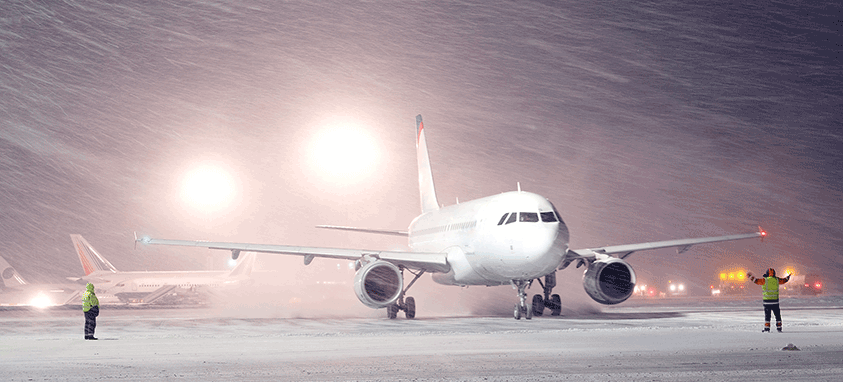Earlier this fall, hurricanes Irma and Harvey left millions in need of a reliable and immediate travel solution. Now, with the unpredictable holiday season fast approaching, the importance of understanding how best to navigate the travel landscape when faced with extreme weather conditions is at an all-time high. Whether experiencing unexpected weather, a flight cancellation or delay, here are a few tips to ensure you are equipped to handle the situation.
1. Departure Time Matters
During high traffic periods and days when weather is expected to be poor, give yourself plenty of time to get to the airport, and look to take the first flight out if you can, as that aircraft has a better chance of already being at the airport and therefore taking off on-time. Delays tend to increase as the day progresses, particularly when inclement weather in one area causes a ripple effect across multiple regions and airports.
2. Become a Priority
Inclement weather can increase the amount of time it takes to travel to the airport, and also leads to crowds upon arrival. Therefore, the ability to skip the security line could make the difference between catching your flight or getting stuck at the airport. Make sure to bundle priority security line access into your ticket and, if you are a frequent traveler, to sign up for TSA Pre and Global Entry. When traveling internationally, make use of a customs concierge who can assist you with every stage of navigating unfamiliar airports, from providing pick-up service to arranging lounge access.
3. Invest in a Travel “Tool Kit”
Does your credit card offer specialized perks or access? Are you a loyalty member of an airline, hotel chain, or car rental service? Most importantly, are you in the know about what your enrollment in these programs can really provide? All too often, people miss out on the benefits of their memberships, such as a room at a sold-out hotel or a seat on a sought-after flight. Take the time to learn about what these services can do for you.
4. Know Your Equipment
Do you feel more comfortable flying on a larger aircraft over a smaller, regional one? Tools like RouteHappy.com can take these preferences into consideration, allowing you to identify the right flight for you based on time, distance, conditions, and plane type. A car upgrade to a larger automobile or SUV can also help you manage your ground transportation needs. When dealing with inclement weather, prioritizing your comfort by selecting more reliable modes of transportation is a must.
5. Consider Flying Privately or Chartering an Aircraft
If there is an extreme weather situation, look into booking a private charter. In the event of extreme weather conditions, the nimble nature of private jet companies often means they can fly with fewer hours’ notice and even operate more flights than a commercial operator to get travelers out of harm’s way. Many programs even offer specific aircraft availability guarantees, ensuring you a seat whenever possible, and can fly into as many as 5,000 smaller airports vs. the 500 main hubs in the U.S.
6. Always Ask
If your flight does get canceled due to inclement weather, ask the airline if they can find a flight for you with another carrier as opposed to waiting for them to reschedule. Though airlines do not always announce this option in order to keep revenue in house, this is often something that can be done, and will help you get to your destination faster.
Andrew Collins is CEO and President of Sentient Jet.





